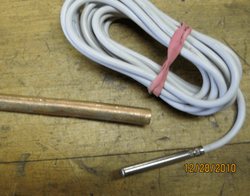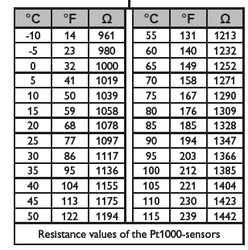I'm starting a new post to get even more of the more electrically inclined people involved.
Below was copied out of the thread titled "EKO controller temp flipping up and down" or some thing like that....
I searched around in past threads and it looks like the temp probe on the EKO is a pt-1000. Does that sound right to all those people who know about this stuff.
I found this one on line. What do you think is this the right style/model. Looks very similar to me but then again I’m a forester not an elec. engineer.
http://www.siliconsolar.com/pt1000-high-temp-sensor-p-502163.html
Not a bad price $8.76
Below was copied out of the thread titled "EKO controller temp flipping up and down" or some thing like that....
I searched around in past threads and it looks like the temp probe on the EKO is a pt-1000. Does that sound right to all those people who know about this stuff.
I found this one on line. What do you think is this the right style/model. Looks very similar to me but then again I’m a forester not an elec. engineer.
http://www.siliconsolar.com/pt1000-high-temp-sensor-p-502163.html
Not a bad price $8.76




